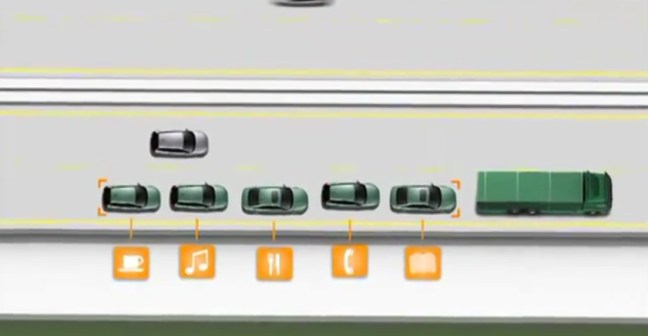
People naturally group up and follow each other. If you’ve ever driven on a highway, you know how it goes. You can cruise along as fast as can be, but if one car comes up behind you, there is sure to be three more behind, speeding just as fast. It’s human nature to break the rules in groups. Volvo approves of safety in numbers. The company has successfully tested an automated way to “platoon” vehicles together called Sartre (Safe Road Trains for the Environment).
Here’s the idea: one professional driver leads a long convoy of vehicles down a highway. When you enter the highway, you can join up with one of these convoys and put your car in a sort of autodrive, where it will automatically measure out the distance it should be from the car ahead and follow the procession. You’re free to leave at any time, but when joined up, you can let go of the wheel and do other things.
Volvo researchers have completed their first successful test of the technology on Volvo’s test track in Sweden. A single car was slaved to a large truck in the test. The driver in the slave car successfully relinquished control to the convoy via a touch dash panel. Researchers involved with the project believe that the technology could hit European highways in as few as 10 years. The big issue will be passing laws across the Union to legalize the vehicle platooning technology.
Automating the process of driving is a big project for a lot of companies. Last year, Google showed off its own set of cars that drive themselves using a mixture of GPS location technology, lasers, and cameras. Google’s fleet of automatic cars has logged more than 100,000 miles in the last couple years.
Though the thought of everyone napping, texting, or eating Cheetos behind the wheel is a bit scary, “platooning” is, admittedly, a pretty cool word. What will the future you do with all the time you gain from letting your car drive itself?


